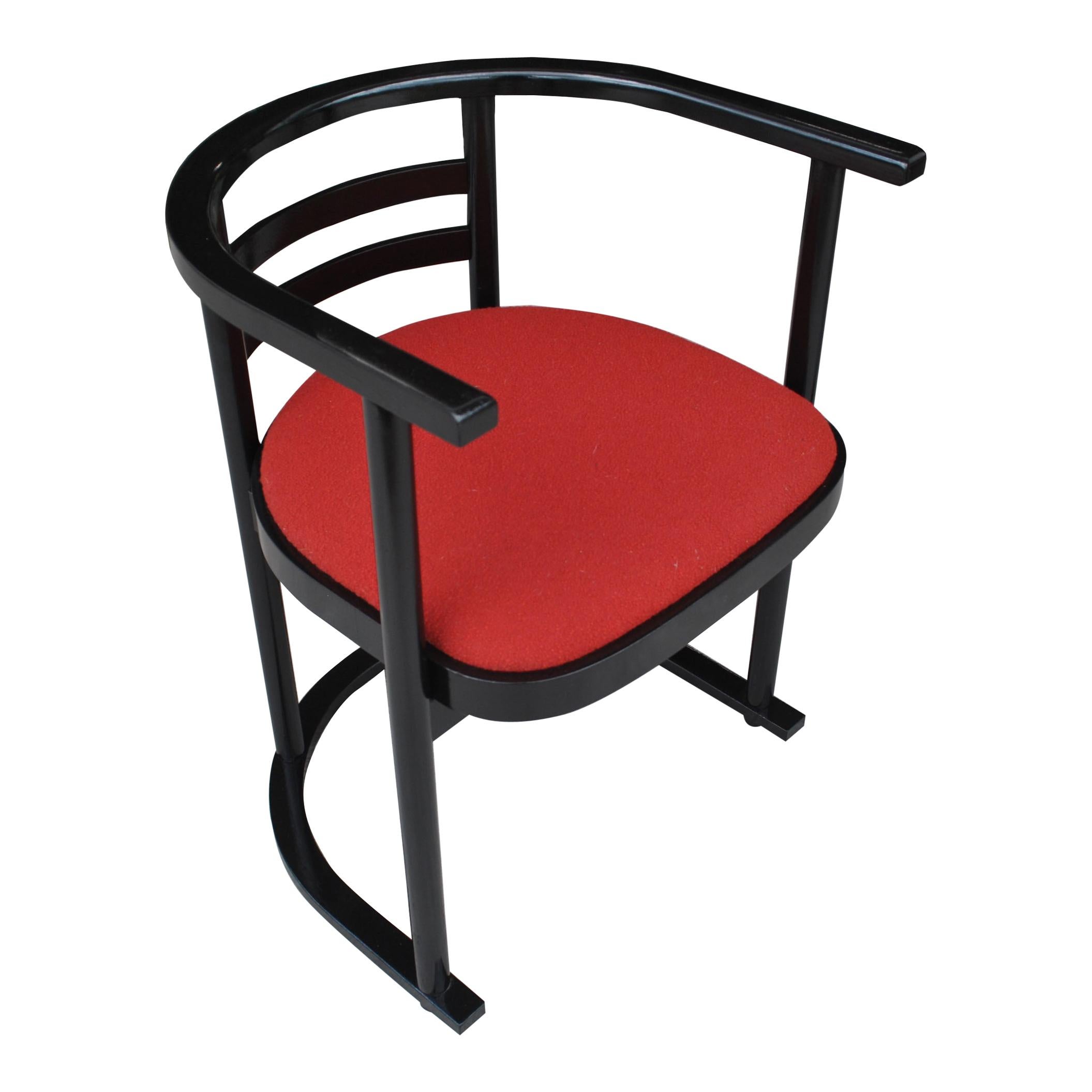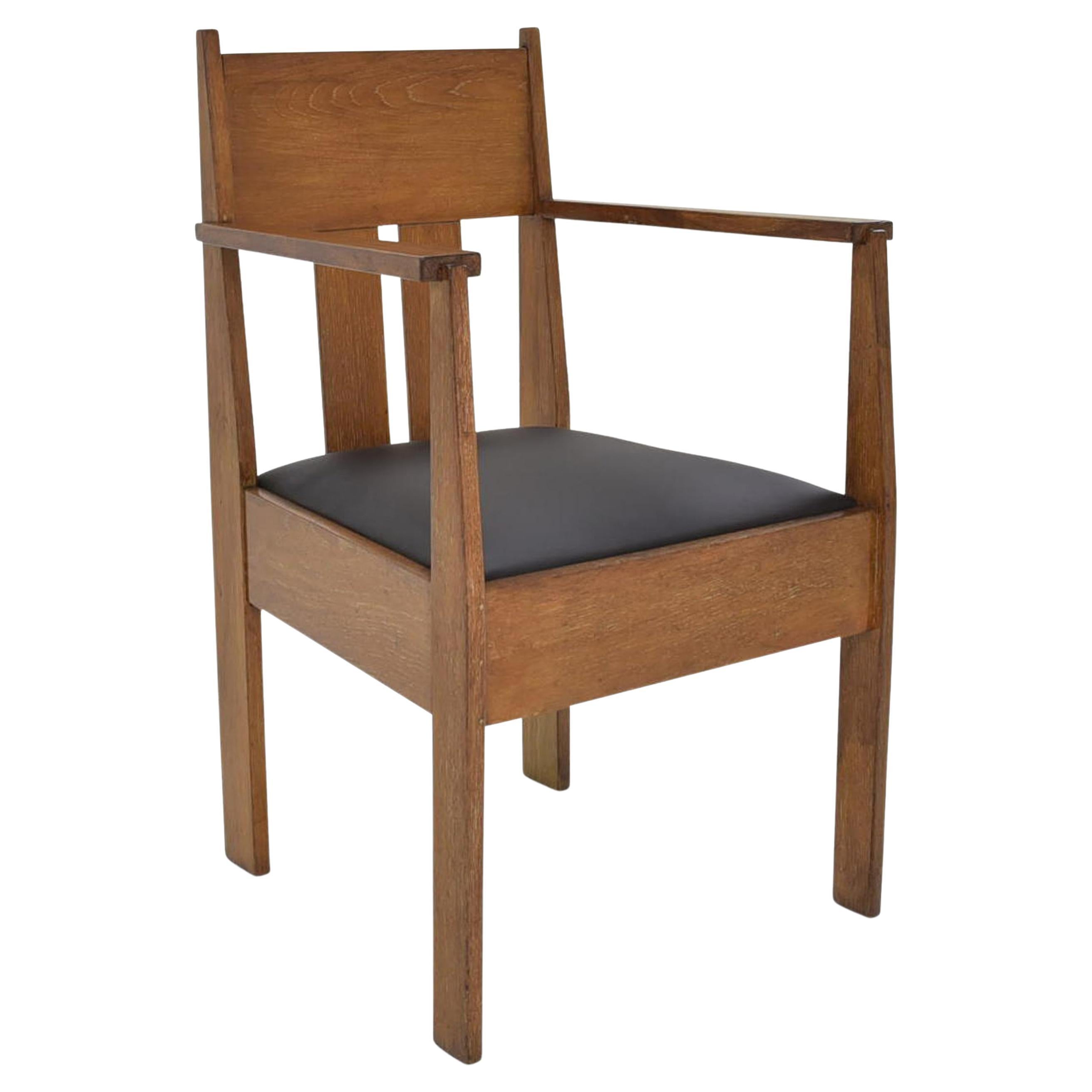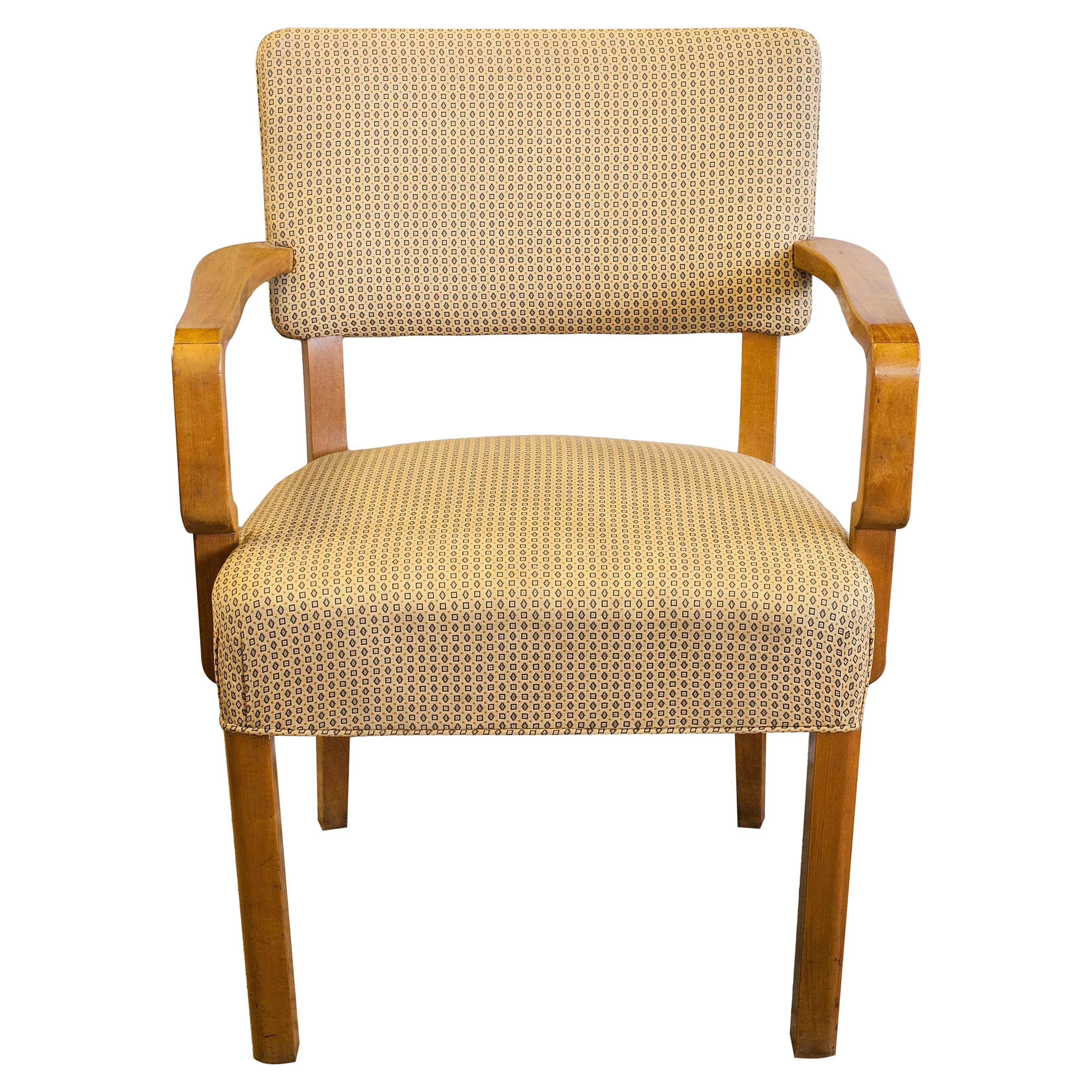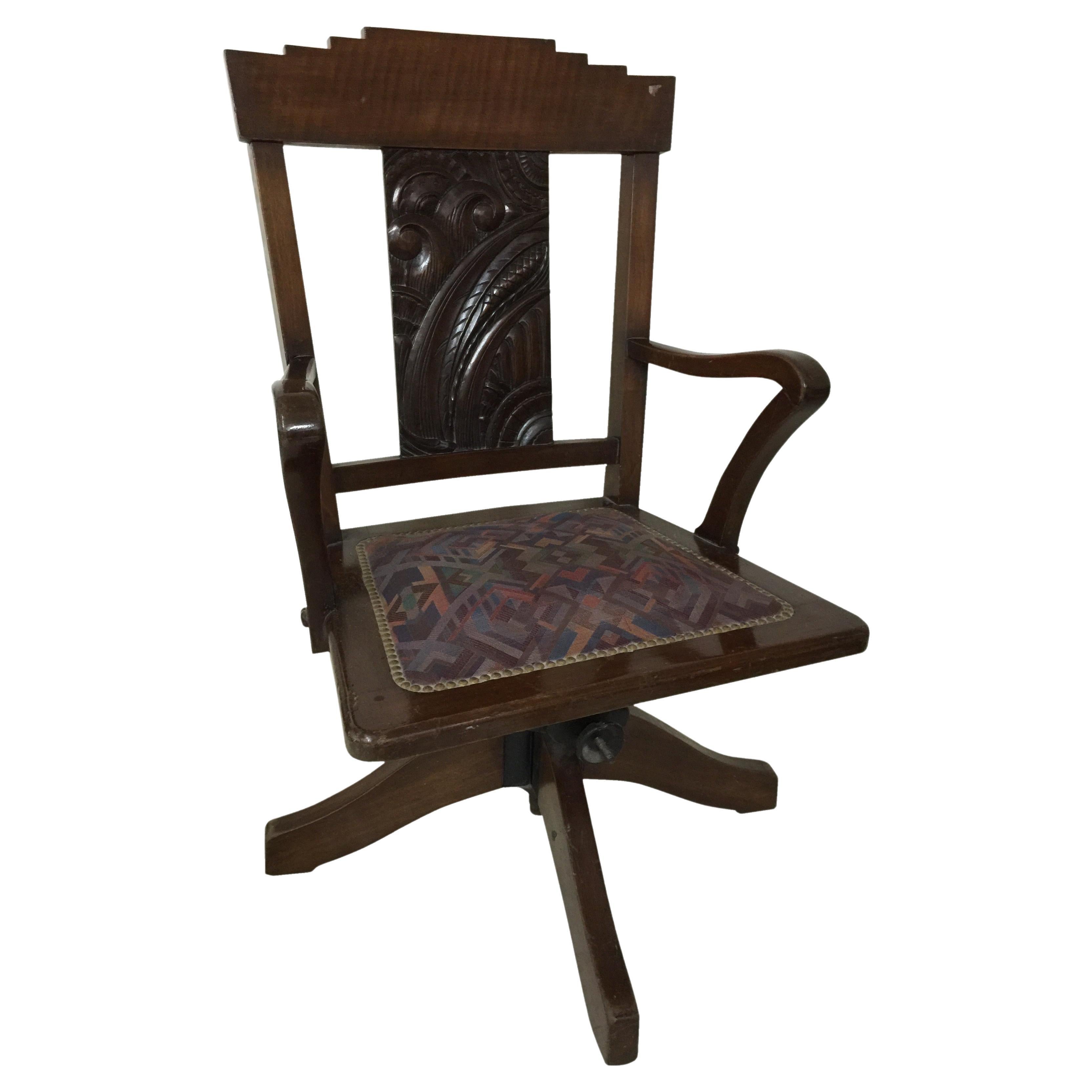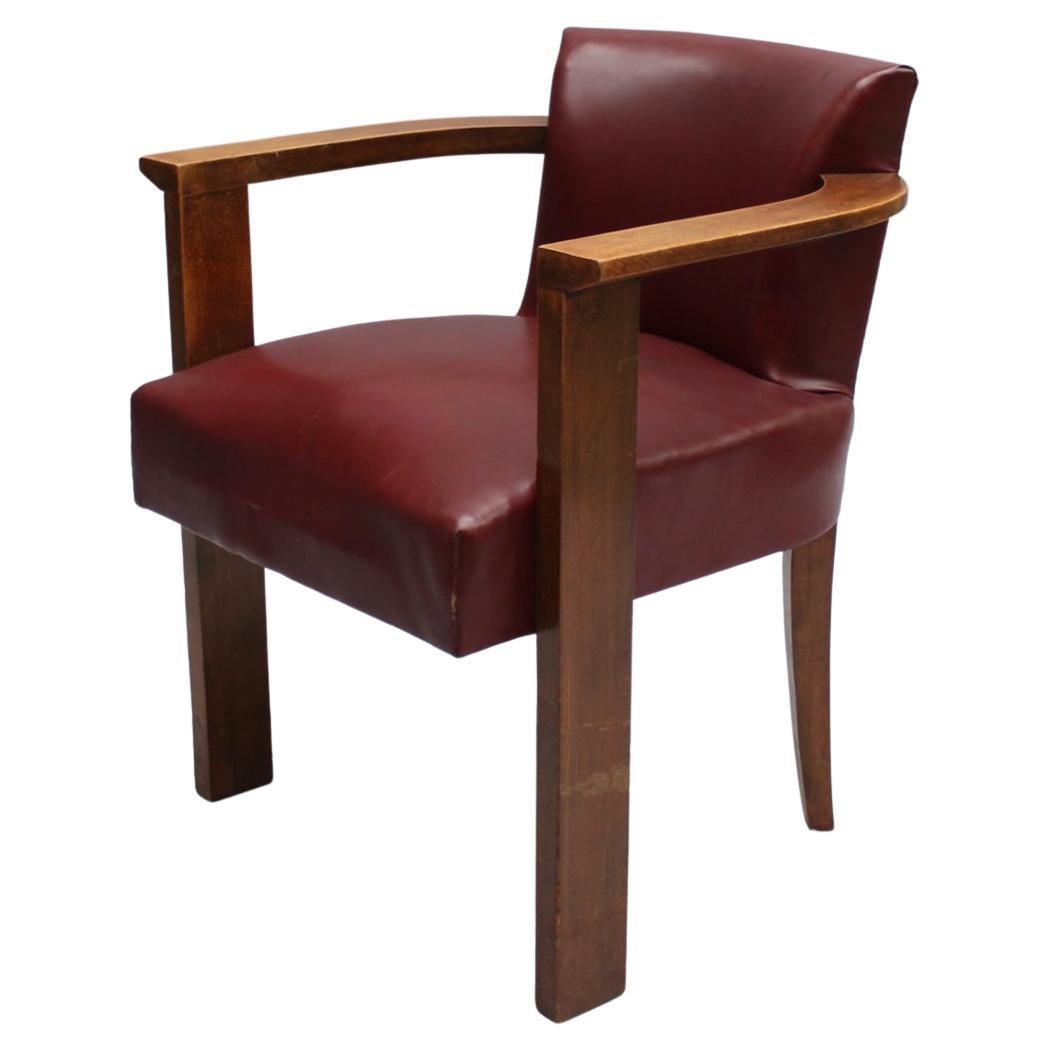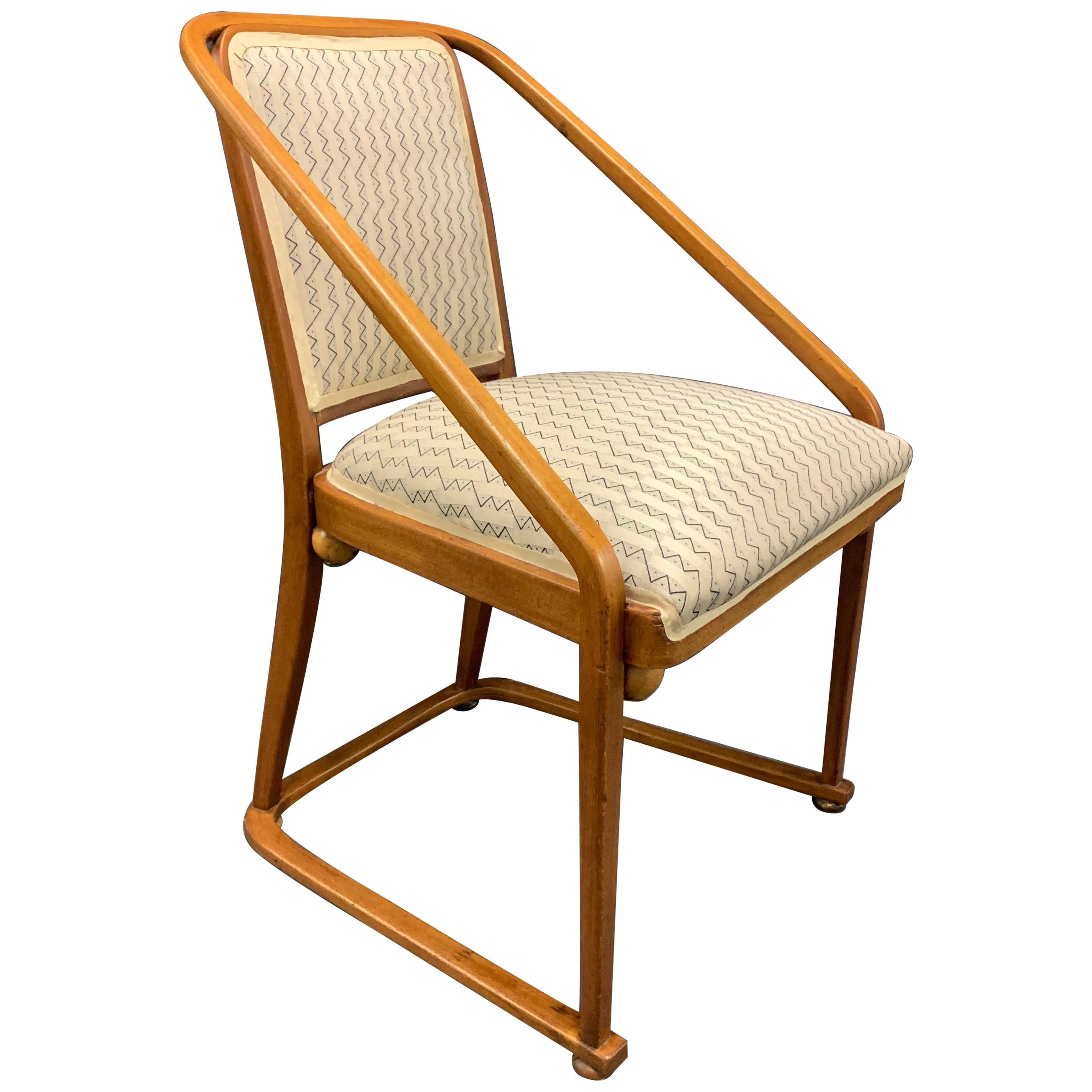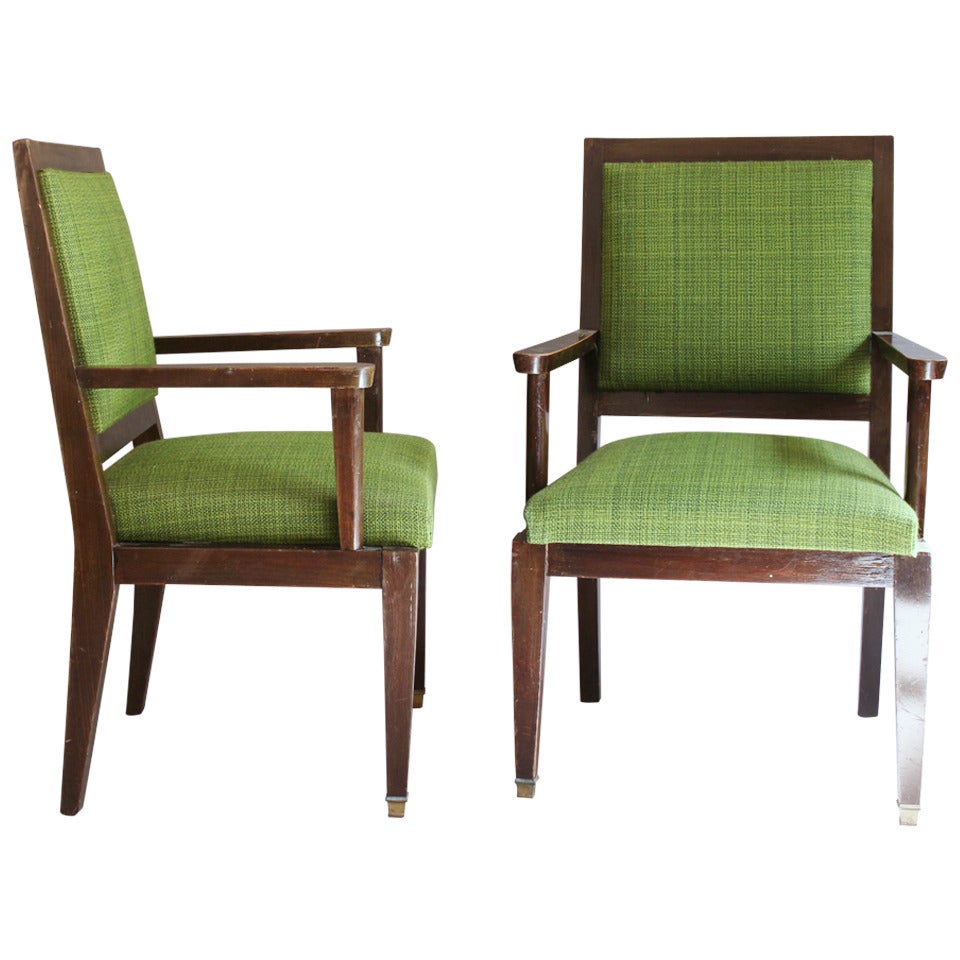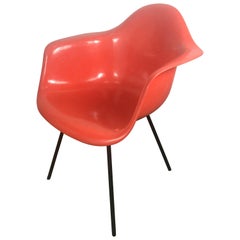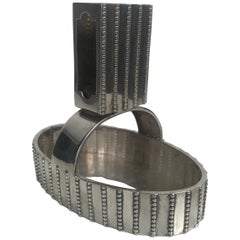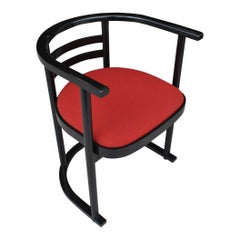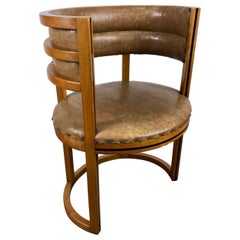
Unusual Art Deco, Bauhaus Accent / Desk Barrel Chair Manner of Josef Hoffmann
View Similar Items
Want more images or videos?
Request additional images or videos from the seller
1 of 14
Unusual Art Deco, Bauhaus Accent / Desk Barrel Chair Manner of Josef Hoffmann
About the Item
- Similar to:Josef Hoffmann (Designer)Gilbert Rohde (Designer)
- Dimensions:Height: 30 in (76.2 cm)Width: 22.5 in (57.15 cm)Depth: 19 in (48.26 cm)Seat Height: 17.5 in (44.45 cm)
- Style:Art Deco (Of the Period)
- Materials and Techniques:
- Place of Origin:
- Period:
- Date of Manufacture:1930s
- Condition:Wear consistent with age and use.
- Seller Location:Buffalo, NY
- Reference Number:1stDibs: LU1062422555312
About the Seller
4.3
Vetted Seller
These experienced sellers undergo a comprehensive evaluation by our team of in-house experts.
Established in 1987
1stDibs seller since 2014
1,121 sales on 1stDibs
Typical response time: 4 hours
More From This SellerView All
- Pair of White Painted Austrian Cube Chairs in the Manner of Josef HoffmannBy Josef HoffmannLocated in Buffalo, NYPair of white painted Austrian cube even armchairs in the manner of Josef Hoffmann, original white painted finish, Arts & Crafts style pierced open lattice work, stunning.Category
Vintage 1910s Austrian De Stijl Armchairs
MaterialsWood
- Early Salmon color Charles and Ray Eames Arm Shell Chair, 2nd generation X baseBy Charles and Ray Eames, Herman MillerLocated in Buffalo, NYEarly Salmon color Charles and Ray Eames Arm Shell Chair, 2nd generation. X base. Amazing condition, retains clean, crisp gel coat, large domes o...Category
Mid-20th Century American Mid-Century Modern Armchairs
MaterialsIron
- Secessionist Silver Cigarette / Match Holder, Desk Accessory, Josef HoffmannBy Josef HoffmannLocated in Buffalo, NYSecessionist sterling silver cigarette / match holder, desk accessory, attributed to Josef Hoffmann, Stunning design, superior quality, hand executed, stamped sterling, also retains ...Category
Early 20th Century Austrian Vienna Secession Tobacco Accessories
MaterialsSterling Silver
- Rare Example, Bauhaus / Art Deco Desk Lamp Designed by Gilbert RohdeBy Gilbert RohdeLocated in Buffalo, NYExtremely rare example. Classic Bauhaus / Deco desk lamp designed by Gilbert Rohde. Retains original brushed nickel finish. Patina, also original on/0ff switch, Lamp has been re-wire...Category
Vintage 1930s American Art Deco Table Lamps
MaterialsNickel
- American Art Deco / Machine Age Tubular Chrome Swivel ArmchairsBy Gilbert RohdeLocated in Buffalo, NYClassic 1930s American Art Deco / Machine Age tubular chrome swivel armchairs, amazing form, patina, all original, retain original oil cloth roun...Category
Vintage 1930s American Art Deco Armchairs
MaterialsChrome
- Set 8 Figured Walnut Modernist Armchairs, conference, GunlockeBy GunlockeLocated in Buffalo, NYGreat set of 8 solid figured walnut armchairs, stunning brass corner detail, amazing Mid-Century Modern design, superior quality and construction, extremely comfortable, seats appear...Category
Vintage 1950s American Mid-Century Modern Armchairs
MaterialsBrass
You May Also Like
- Elephant Desk Chair by Josef Hoffmann for J&J KohnBy Jacob & Josef Kohn, Josef HoffmannLocated in Banská Štiavnica, SKElephant desk chair by Josef Hoffmann for J&J Kohn professionally stained and repolished.Category
Antique Early 1900s Austrian Vienna Secession Office Chairs and Desk Chairs
MaterialsBentwood
- Secession Armchair by Josef HoffmannBy Jacob & Josef Kohn, Josef HoffmannLocated in Banská Štiavnica, SKSecession armchair by Josef Hoffmann professionally stained and repolished. Signed J&J Kohn Teschen Austria.Category
Antique Early 1900s Austrian Vienna Secession Armchairs
MaterialsBentwood
$13,139 / set - 1 Vintage Thonet Josef Hoffmann Style Bauhaus ChairBy Josef HoffmannLocated in Pasadena, TXJosef Hoffmann (Austria, 1870–1956) The Austrian architect Josef Hoffmann was a central figure in the evolution of modern design, and a leader in an aesthetic movement born in Europe in the late 19th century that rejected florid, extravagant ornamentation in favour of a new emphasis on simplicity of line. As a founder of the turn-of-the-century Wiener Werkstätte (in English: the Viennese Workshops), a design cooperative that produced superbly crafted furniture and housewares, Hoffmann was a pioneering practitioner of what would become a fundamental principle of modernism: that good design is a way of life. One vintage Josef Hoffmann Bauhaus style chair Classic Hoffmann style...Category
Mid-20th Century European Bauhaus Armchairs
MaterialsBentwood
- Bauhaus Armchair Desk Chair in Oak, 1930Located in Lüdinghausen, DEArmchair restored Bauhaus around 1930 oak armchair desk chair Features: Removable seat pad Leatherette cover renewed High quality Stable & comfortable Reduced design with geo...Category
20th Century Art Deco Office Chairs and Desk Chairs
MaterialsOak
- Desk Chair Style: Art Deco, France, 1920Located in Ciudad Autónoma Buenos Aires, CArt Deco desk chair Country: France If you are looking for a desk chair to match your desk, we have what you need. We have specialized in the sale of Art Deco and Art Nouveau and Vintage styles since 1982. If you have any questions we are at your disposal. Pushing the button that reads 'View All From Seller'. And you can see more objects to the style for sale. Why are there so many antiques in Argentina? In the 1880 – 1940 there was a grate wave of immigration encouraged by the periods of war that were taking place. 1st World War took place between 1914 and 1918 2nd World War took place between 1939 and 1945 The immigrants options were New York or Buenos Aires. Tickets were cheap and in Buenos Aires they were welcomed with open arms, as it was a country where everything was still to be done. Argentina was the country of new opportunities, labour was needed and religious freedom was assured, in many cases the of the family travel first until they were settled and then the rest of the family members join them. In the immigrant museum “Ellis Island Immigrant Building” in New York you can se the promotional posters of the boats that would take them to a new life. Between the years 1895 and 1896, Argentina had the highest DGP (gross domestic product) per capita in the world according to the Maddison Historical Statistics index, this situation arose due to the large amount of food being exported to European countries, which were at war. The Argentinean ships left the port of Buenos Aires with food, but they returned with furniture, clothes and construction elements, (it´s common to see this the old buildings of the historic neighbourhood of San Telmo, the beams with the inscription “Made in England)”, as well as many markets that were built in Buenos Aires, such us the San Telmo Market, whose structure was brought by ship and afterwards assembled in 900 Defensa Street. With the great influence of European immigrants living in the country, the children of the upper classes travelled to study in France, resulting in the inauguration of “La Maison Argentinienne”, on 27th of June 1928, in the international city of Paris, which hosted many Argentinians that were studying in Frace. It´s the fourth house to be built after France, Canada and Belgium, being the first Spanish-speaking one. Still in place today (17 Bd Jourdan, 75014, Paris, France). Many of the children of these wealthy families who attended international art exhibitions, museums and art courses abroad, took a keen interest in the European style. This is why Buenos Aires was at the time referred as “The Paris of South America”. Between the years 1890 and 1920 more than a hundred Palaces were built on Alvear Avenue the most exclusive avenue in Buenos Aires. Today some of these palaces have been transformed into museums, hotels and embassies. In the year 1936, the Kavanagh building was inaugurated, it was the tallest reinforced concrete building in South America. During 1994 the American Society of Civil Engineers distinguished it as an “international engineering milestone”, and it´s now considered a World Heritage of Modern Architecture. At the time was common to hire foreign architects such as Le Corbusier, who visited Buenos Aires/Argentina in 1929 and in 1948 he drew up the blueprints for a house built in La Plata City (which was declared a World Heritage Site). In 1947, the Hungarian architect Marcelo Breuer designed “Parador Ariston” in the seaside city of Mar del Plata. After an Argentinean student at Harvard University convinced him to come to Argentina. He worked on an urban development project in the Casa Amarilla, area of La Boca. The Ukrainian architect, Vladimiro Acosta, arrives in Argentina in 1928 and worked as an architect until que moved to Brazil. Antonio Bonet, a Spanish architect who worked with Le Corbusier in Paris, arrives in Argentina in 1937, where he carried out several architectural works and in 1938 designs the well-known BFK...Category
Vintage 1920s French Art Deco Office Chairs and Desk Chairs
MaterialsWood
- Desk Chair Style: Art Deco, France, 1930Located in Ciudad Autónoma Buenos Aires, CArt Deco desk chair Wood Year: 1930 Country: France If you are looking for a desk chair to match your desk, we have what you need. We have specialized in the sale of Art Deco and Art Nouveau and Vintage styles since 1982. Pushing the button that reads 'View All From Seller'. And you can see more objects to the style for sale. Why are there so many antiques in Argentina? In the 1880 – 1940 there was a grate wave of immigration encouraged by the periods of war that were taking place. 1st World War took place between 1914 and 1918 2nd World War took place between 1939 and 1945 The immigrants options were New York or Buenos Aires. Tickets were cheap and in Buenos Aires they were welcomed with open arms, as it was a country where everything was still to be done. Argentina was the country of new opportunities, labour was needed and religious freedom was assured, in many cases the of the family travel first until they were settled and then the rest of the family members join them. In the immigrant museum “Ellis Island Immigrant Building” in New York you can se the promotional posters of the boats that would take them to a new life. Between the years 1895 and 1896, Argentina had the highest DGP (gross domestic product) per capita in the world according to the Maddison Historical Statistics index, this situation arose due to the large amount of food being exported to European countries, which were at war. The Argentinean ships left the port of Buenos Aires with food, but they returned with furniture, clothes and construction elements, (it´s common to see this the old buildings of the historic neighbourhood of San Telmo, the beams with the inscription “Made in England)”, as well as many markets that were built in Buenos Aires, such us the San Telmo Market, whose structure was brought by ship and afterwards assembled in 900 Defensa Street. With the great influence of European immigrants living in the country, the children of the upper classes travelled to study in France, resulting in the inauguration of “La Maison Argentinienne”, on 27th of June 1928, in the international city of Paris, which hosted many Argentinians that were studying in Frace. It´s the fourth house to be built after France, Canada and Belgium, being the first Spanish-speaking one. Still in place today (17 Bd Jourdan, 75014, Paris, France). Many of the children of these wealthy families who attended international art exhibitions, museums and art courses abroad, took a keen interest in the European style. This is why Buenos Aires was at the time referred as “The Paris of South America”. Between the years 1890 and 1920 more than a hundred Palaces were built on Alvear Avenue the most exclusive avenue in Buenos Aires. Today some of these palaces have been transformed into museums, hotels and embassies. In the year 1936, the Kavanagh building was inaugurated, it was the tallest reinforced concrete building in South America. During 1994 the American Society of Civil Engineers distinguished it as an “international engineering milestone”, and it´s now considered a World Heritage of Modern Architecture. At the time was common to hire foreign architects such as Le Corbusier, who visited Buenos Aires/Argentina in 1929 and in 1948 he drew up the blueprints for a house built in La Plata City (which was declared a World Heritage Site). In 1947, the Hungarian architect Marcelo Breuer designed “Parador Ariston” in the seaside city of Mar del Plata. After an Argentinean student at Harvard University convinced him to come to Argentina. He worked on an urban development project in the Casa Amarilla, area of La Boca. The Ukrainian architect, Vladimiro Acosta, arrives in Argentina in 1928 and worked as an architect until que moved to Brazil. Antonio Bonet, a Spanish architect who worked with Le Corbusier in Paris, arrives in Argentina in 1937, where he carried out several architectural works and in 1938 designs the well-known BFK chair...Category
Vintage 1930s French Art Deco Office Chairs and Desk Chairs
MaterialsWood
Recently Viewed
View AllMore Ways To Browse
Art Deco Ebony Desk
Art Deco Desk Ebony
Deco Barrel Chair
Art Deco Barrel Chair
1930s Birch Armchairs
20th Century Naugahyde Armchairs
Kem Webber Chair
Deco Chairs Rohde
1930 Accent Chair
Gilbert Rohde Art Deco Chair
Barrel Accent Chair
Barrel Accent Chairs
Mid-20th Century Naugahyde Armchairs
Barrel Desk Chair
Kem Weber Art Deco Chairs
Desk By Gilbert Rohde
1930s Barrel Chair
Snakeskin Chair


